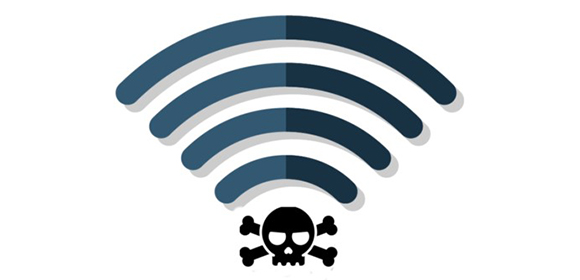According to a 2018 One World Identity survey, 81% of Americans regularly connect to public Wi-Fi networks. This statistic is not the least bit surprising, but it is quite concerning. Without proper knowledge of the security risks, public Wi-Fi networks can be a wide-open door for hackers to access your personal information. Using tactics like packet sniffing, rogue Wi-Fi networks, and man-in-the-middle attacks, hackers prey on those who are not aware of the pitfalls of these free Wi-Fi networks. Public Wi-Fi can be dangerous, but there are ways to circumvent it to keep your data safe.
To understand why public Wi-Fi poses problems, you have to understand how your mobile device interacts with the Wi-Fi network and the internet beyond. When you connect to a wireless router, either at home, in public, or in the workplace, any communication sent or received on your device is transmitted in chunks, commonly referred to as packets. Traffic is broken into packets to help identify what type of message is being sent, where the message is to be directed, and other information used by your device to prevent losing packets, and therefore your message.
If you walk into any Starbucks, chances are you will have a free Wi-Fi network pop up on your phone as “Starbucks”. Occasionally, you may see another network appear named “Starbucks Free Wi-Fi” or just “Free Wi-Fi”. These networks are sometimes created by hackers and purposely named something enticing as an attempt to intercept personal information. Once you connect, attackers will have access to any data that you pass through their faux network. These are known as rogue or evil twin Wi-Fi networks, and they are just one tactic used to trick people who connect to public Wi-Fi.
In the same way a criminal could use a wiretap to listen in on phone conversations, a cyber-criminal could use packet sniffing software to listen in on wireless conversations. Public Wi-Fi is rife with opportunity for malicious users to steal information from unsuspecting users on the same network. Programs like Wireshark or Fiddler are free to download, and allow users to look at all traffic coming and going through the network. From here, hackers can look at packets sent from any device on the network, and use them to deduce sensitive information such as addresses, credit card numbers, and phone numbers. Any public network is susceptible to malicious use, and most victims would have no idea they were duped.
Now that we have covered some of the risks associated with public Wi-Fi, we can discuss the best ways for you to protect yourself. If you absolutely have to connect to a public Wi-Fi network to work, you should do so through a Virtual Private Network, commonly referred to as a VPN. A VPN is able to protect your data from attackers by using dedicated, secure connections and complex encryption protocols. The benefit of having both of these layers of security is that even if a hacker is able to intercept any of your information, it will be unusable to them because it is all encrypted. VPNs are an integral technology in today’s fast-paced business environment.
You can circumvent the question marks surrounding public Wi-Fi spots entirely by connecting your device to a mobile hotspot instead. This can be done through either a standalone hotspot device purchased from your cellular provider, or by turning your mobile phone device itself into a hotspot. With many cellular companies promising 5G coverage nationwide in the near future, these cellular connections could prove to be both faster and more secure then your local coffee shop’s Wi-Fi.
If you think you have fallen victim to any of these attacks, please contact us at (412)-261-5600 or via the Help Desk email, hdsupport@plummerslade.com.
Works Cited: One World Identity Survey (By Neil Hughes)





